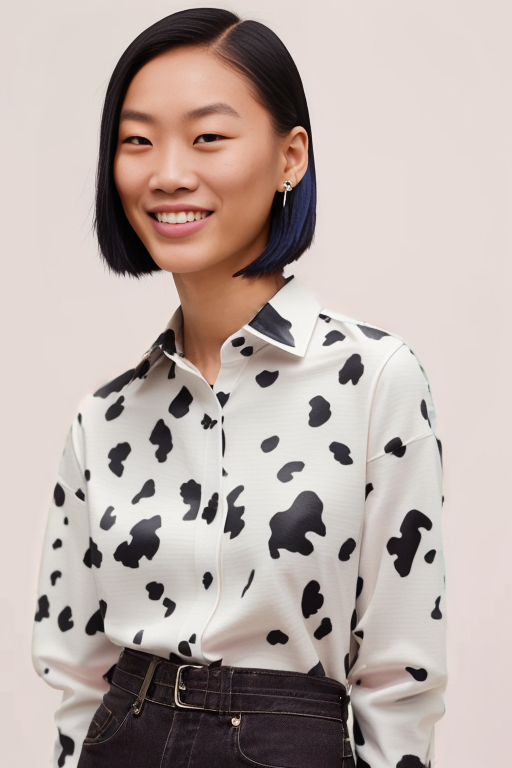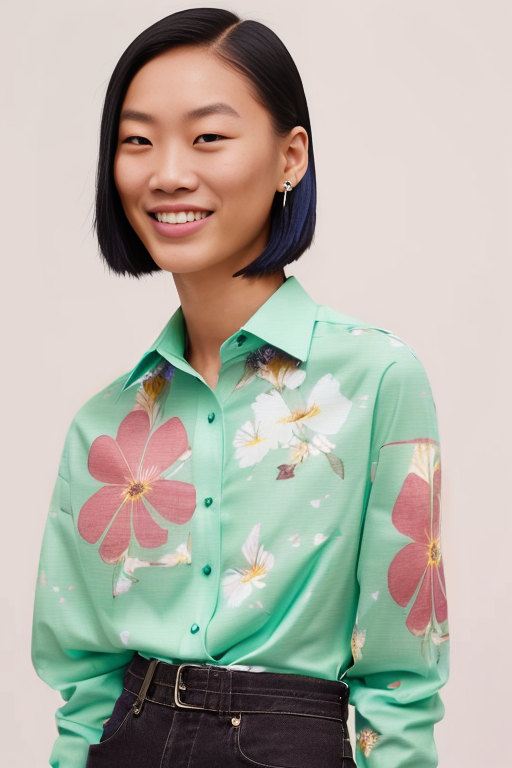
Feared by some and already used by many, artificial intelligence (AI) is heralding a new era in the fashion sector, radically transforming how garments are conceived, designed, produced, and sold. This digital revolution extends across the entire fashion value chain, from optimizing design processes to personalizing the shopping experience for consumers.
However, despite much discussion about the impact of AI, not everyone understands what its emergence entails and how it can be leveraged for their own benefit.
From Neural Fashion, through this text, we aim to show all fashion designers how AI can enhance all processes related to the study, design, promotion, and sale of all kinds of clothing.
Observing the trends that shape fashion each year and acting accordingly has always been a laborious task that traditionally required a combination of expert intuition and manual market data analysis. An approach that, although valuable, is inherently limited in scale and speed. AI, with its ability to process and analyze large volumes of data at an impressive speed, is changing this paradigm.
AI-based tools and platforms are being used to scan social media, fashion blogs, online sales pages, and other sources of digital information to identify emerging patterns, popular colors, trending fabrics, and styles that are falling out of favor. This technology not only provides a broader and deeper insight into current and emerging trends but also allows designers and brands to quickly adapt to changes in consumer preferences. Furthermore, by predicting which trends will gain popularity, companies can plan their future collections more effectively, ensuring that their offerings are as relevant and appealing as possible.
Using advanced algorithms, AI can process vast volumes of data from social media interactions, purchasing preferences, and reactions to trends, offering a detailed and real-time insight into emerging patterns and consumer preferences. This capability not only enhances trend forecasting but also allows for deep customization of products and marketing strategies, tailoring them to the specific demands of different market segments.
Furthermore, AI-based predictive analysis contributes to the optimization of supply chains, enabling brands to respond agilely to market fluctuations and minimize the risk of overproduction. The accuracy in trend forecasting and the ability to customize offerings ensure not only the relevance of the products but also customer satisfaction and loyalty. This synergy between technology and fashion promises not only greater operational efficiency for brands but also more enriching and personalized shopping experiences for consumers.
Artificial intelligence is opening up new horizons in the world of fashion design, serving as an inexhaustible source of inspiration and creativity. By merging data analysis capabilities with creative processes, AI enables designers to explore patterns, colors, and styles they may not have previously considered.
This technology not only streamlines the design process by automating repetitive tasks but also introduces a new level of personalization and experimentation. With AI, designers can simulate how their creations would look in different materials or various color configurations before creating a physical prototype, allowing them to refine their designs more efficiently.


Generative AI design tools are transforming the way fashion designers conceptualize and create. These technologies use algorithms to automatically generate designs and patterns, offering a broad range of creative options based on specific criteria entered by users.
Beyond generating innovative ideas, these tools can adapt to personal style preferences or current fashion trends, making it easier to create unique and personalized designs. The ability to generate unlimited variations not only significantly reduces development time but also encourages deeper creative exploration, allowing designers to experiment with combinations that previously might not have been possible.
But it’s not all about data and facilitating the emergence of inspiration for fashion designers. AI is also redefining the traditional concept of photo shoots and photography sessions. With innovative solutions like those offered by Neural Fashion, brands and designers are discovering the potential of AI to create fashion campaigns more efficiently and cost-effectively.
This technology simplifies production logistics and allows brands to create much more creative campaigns, which would not be possible with a traditional production process.
The result is a fast and affordable visual production, which not only saves time and money but also facilitates experimentation with different styles and contexts without the logistical limitations of a traditional photo session.
Neural Fashion is at the forefront of this revolution, offering designers the ability to visualize their creations on virtual models with astonishing accuracy and realism. This approach not only speeds up the process of creating catalogs and marketing materials but also opens up a world of possibilities for customizing the presentation of fashion collections to different audiences.
This technological advancement benefits not only creators and brands in terms of efficiency and cost but also provides consumers with a more authentic and varied representation of fashion.

Obviously, the sales process is a fundamental part of any business, but even more so in a sector with as many sales channels and possibilities as fashion. AI enables a deeper and more detailed understanding of consumer behavior and preferences, allowing companies to offer personalized recommendations and improve the online shopping experience.
Moreover, AI can predict fashion trends and future demands with great accuracy, enabling brands and designers to adjust their production and stock strategies to maximize sales and minimize waste, adapting agilely to the changing market dynamics.
Through data analysis and machine learning, brands can now predict fluctuations in demand more accurately, thus optimizing production, inventory, and logistics.
This not only reduces the risk of overproduction and associated costs but also allows for a quicker response to consumer trends, improving customer satisfaction. By implementing AI systems in supply chains, fashion companies are achieving more sustainable and efficient management, ensuring that the right products reach the market in the fastest and most cost-effective way possible.
The adoption of artificial intelligence (AI) in the fashion industry presents challenges that, while significant, can be transformed into positive opportunities. One such challenge is leveraging AI to foster unprecedented innovation in design and production. Through advanced algorithms, brands can explore new textures, patterns, and material combinations that they may not have considered before, driving an era of creativity and experimentation.
Another positive aspect is AI’s potential to enhance the sustainability of the fashion industry. By optimizing supply chains and more accurately predicting consumer trends, brands can reduce material waste and overproduction, contributing to more environmentally responsible practices.
Furthermore, AI can play a crucial role in mass personalization, allowing brands to offer products that not only meet individual consumer preferences but also reduce the need for overproduction.
When these challenges are strategically addressed, they can not only minimize the negative impacts associated with the adoption of AI but also catalyze progress towards a more innovative, sustainable, and consumer-focused fashion industry. The key is to balance technological implementation with ethical considerations, ensuring that the advancement towards the future of fashion is both responsible and revolutionary.
The integration of artificial intelligence (AI) marks the beginning of an era of unprecedented transformation, offering possibilities ranging from redefining design and production to revolutionizing personalization and operational efficiency. Through innovation in trend analysis, placing new designs on different bodies thanks to Neural Fashion, supply chain optimization, and enhancing the shopping experience, AI promises not only a more sustainable and efficient future for fashion but also greater inclusivity and diversity in fashion representations.
Compartir
© 2025 Neuralfashion